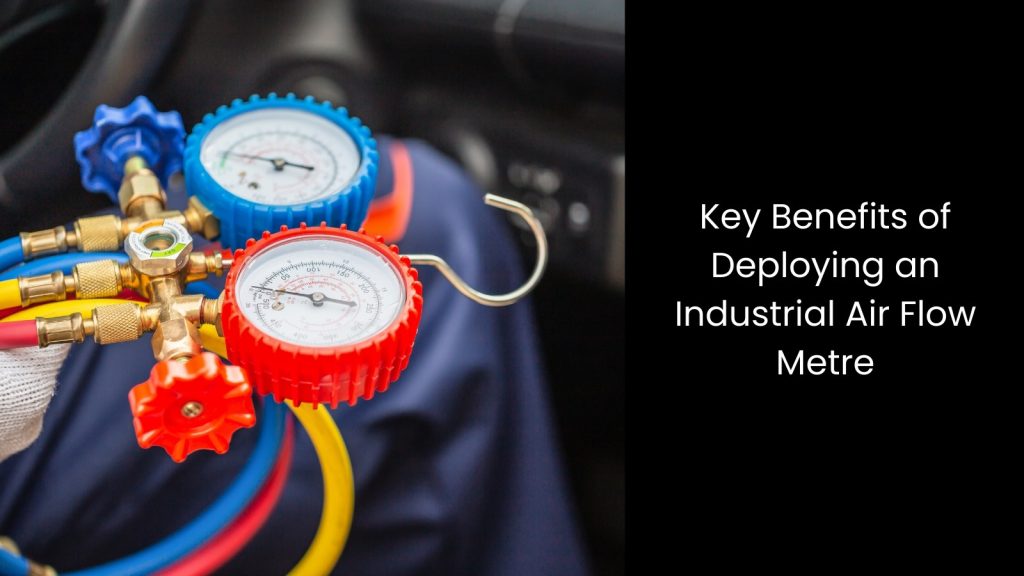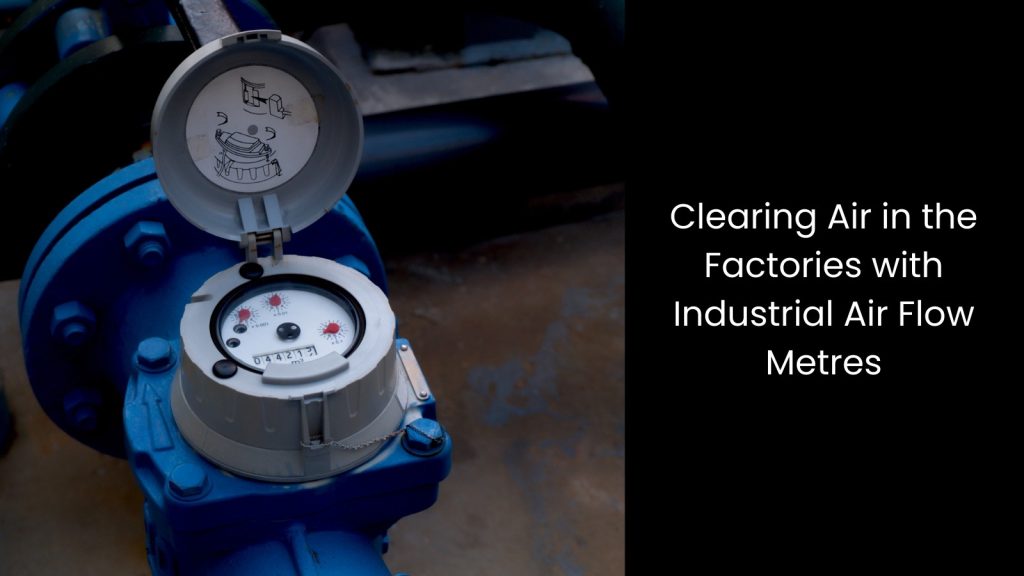In the fast-moving industrial world, precision lays the foundation for everything. This certainly includes the air we breathe. In Singapore, many industries overlook the crucial role air flow plays in their operations, but failing to manage it properly can lead to inefficiencies, higher costs, and even safety risks. This is where industrial air flow metres come into play, offering a powerful tool to monitor and control airflow with pinpoint accuracy.
In this article, we will explore why deploying an air flow metre is one of the smartest decisions you can make for your industrial facility’s performance.
We will understand
What is an Air Flow Metre?

- An airflow metre measures the amount of air moving through a system. This allows industries to monitor and control airflow accurately. It takes centre stage when it comes to applications like HVAC systems, industrial manufacturing, automotive engines, and environmental monitoring.
- Since it is able to provide real-time data on air volume and velocity, the airflow metre helps optimise system performance, ensuring efficient operation. There are different types of air flow metres, such as mass flow metres, volumetric flow metres, and thermal flow metres, each suited for specific applications depending on the accuracy and conditions required.
- For example, in manufacturing plants it helps maintain precise air levels necessary for machinery and production processes, preventing energy waste and reducing costs. Another major fact is that it enhances energy efficiency by identifying leaks or inefficiencies in a system. This leads to cost savings because the system can operate without excess energy loss.
- So, as it is evident, the industrial world cannot function without these air flow metres if they care for balancing out air efficiency and operations.
Key Benefits of Deploying an Industrial Air Flow Metre

Accurate Air Flow Measurement
It is certainly a key reason to deploy an airflow metre in an industrial setting. Let us explore why.
The main reason is that it ensures precise monitoring and control of processes that rely on consistent airflow. In industries like manufacturing, maintaining the correct airflow is essential for efficiency and product quality. The airflow metre provides precise airflow data, which is essential for monitoring and controlling processes. This data allows operators to keep track of how much air is being used, ensuring that the system performs optimally without wasting energy.
For example, in a manufacturing plant, machines often need specific amounts of air to function properly. If the airflow is too high or too low, it can affect the quality of the products or even cause equipment failure. As it provides accurate airflow measurement, the airflow metre helps maintain the correct settings, improving both productivity and product consistency.
As we mentioned above, precise airflow data helps identify inefficiencies in the system, such as air leaks or blockages. If they can detect these issues early, it will allow for quick repairs, preventing larger problems that could lead to costly downtime. This also saves energy, as the system does not have to work harder to compensate for airflow problems.
Accelerating Energy Efficiency
Controlling energy usage undoubtedly presents a challenge for manufacturing companies because many industrial systems rely heavily on compressed air, which can be inefficient and costly if not properly managed.
These systems usually have hidden issues like air leaks, pressure drops, or equipment inefficiencies that consume more energy than necessary, leading to higher operational costs. When deploying an airflow metre, it helps accelerate energy efficiency by providing accurate data on airflow and identifying air leaks and inefficiencies in the system. Since it makes the path to detect these problems early, manufacturing companies can fix them quickly and avoid wasting energy.
For example, in a factory using compressed air to power machinery, a small air leak can go unnoticed but significantly increase energy consumption over time. However, if they have an airflow metre in place, it will continuously monitor the airflow and detect inconsistencies, helping operators identify and repair leaks before they become major energy drains. This not only reduces unnecessary energy usage but also lowers costs, as the system no longer needs to work harder to compensate for lost air.
It is also visible that over-pressurising air systems wastes energy, but an air flow metre allows operators to maintain the correct airflow levels, improving overall efficiency. This optimisation becomes even more important for large-scale operations, where even small improvements in energy efficiency can lead to significant cost savings.
Monitoring Emissions and Air Quality
In Singapore, air quality remains a serious concern. Did you know this?
The National Environment Agency reports that 95% of air pollution is caused by industrial emissions and vehicle exhaust. In industrial settings, monitoring emissions and air quality becomes essential to ensure the environment stays safe and meets strict regulations.
This is where deploying an air flow metre helps address this, as it provides accurate data on the amount of air passing through systems and the pollutants being released. Another fact is that the air flow metre ensures compliance with environmental regulations by monitoring emissions and air quality.
For instance, in manufacturing plants where machinery produces gases and particles, air flow metres can track the volume and rate of these emissions. This allows operators in Singapore to adjust the system to ensure that emissions stay within acceptable levels. Without such monitoring, harmful pollutants like carbon dioxide, sulphur, and particulate matter can be released into the environment, degrading air quality and posing health risks.
Data Logging
The latter allows manufacturers to track and record airflow information over extended periods.
This data collection is important for understanding how systems perform and identifying areas for improvement. An airflow metre facilitates long-term data recording, helping in trend analysis and system improvement. For example, in a manufacturing plant, monitoring airflow patterns over time helps operators spot trends such as fluctuations in air pressure, seasonal variations, or patterns that indicate equipment wear.
As it is possible to store and analyse this data, manufacturing companies can predict when maintenance is needed, preventing unexpected breakdowns and costly downtime. The air flow metre continuously logs data, providing detailed insights into system behaviour. This allows for a deeper understanding of how airflow affects energy efficiency, equipment performance, and production quality.
If data shows that airflow consistently drops during certain shifts or operations, it could signal a need to adjust the system or repair leaks. Over time, this type of analysis helps optimise system performance, ensuring that equipment runs efficiently and without unnecessary energy waste.
Cerexio Air Management System for Any Manufacturing Setting

Cerexio Air Management System, powered by Industry 4.0 capabilities, offers cutting-edge air monitoring and control solutions for any type of manufacturing settings in Singapore. Our Air Management System optimises energy use, enhances process efficiency, and ensures compliance with environmental standards through real-time data analytics, predictive maintenance, and smart automation, making it ideal for modern, technology-driven industrial environments. If you are worried about the air quality inside your industrial setup, Cerexio is your final destination.
Clearing Air in the Factories with Industrial Air Flow Metres

It is visible that clearing air in factories with industrial air flow metres is the ideal way to strike a balance between safety, efficiency, and sustainability. If they can precisely control airflow, factories can avoid harmful air pollution, reduce energy waste, and extend the life of their equipment. This approach leads to a cleaner environment and better operational outcomes across the board. Do you agree?
